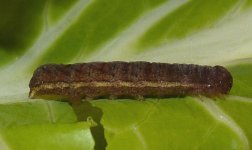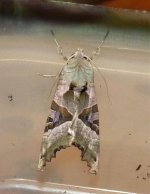Mouldy
skywatcher, dragonhunter
Found this caterpillar today on a cauliflower from Tesco, originated in Cornwall now in Gateshead. Been searching google but no further forward with an ID so would be grateful for any help.
Also, I realise it must be a species which spends the winter as a caterpillar so what do you advise I do with it, the kids have already christened it 'Henry' and it's in a container with some cauli leaves.
If the photo's too crappy (I read the last thread on the subject:eek! I'll try and get one in the daylight tomorrow.
I'll try and get one in the daylight tomorrow.
Thanks in anticipation
A.
Also, I realise it must be a species which spends the winter as a caterpillar so what do you advise I do with it, the kids have already christened it 'Henry' and it's in a container with some cauli leaves.
If the photo's too crappy (I read the last thread on the subject:eek!
Thanks in anticipation
A.





